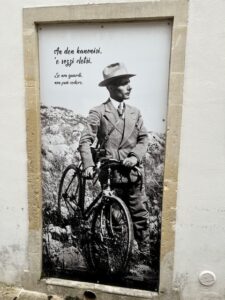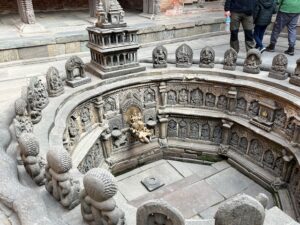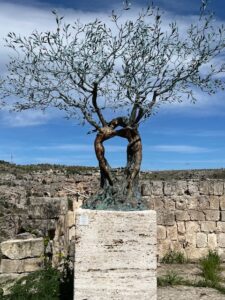Destination Management Planning

Destination Management Planning:
Implementation Steps
A well-structured Destination Management Plan (DMP) ensures sustainable tourism growth, preserves local culture and environment, and enhances visitor experiences. Here’s a breakdown of the key actionable steps for effective planning:

Implementation steps
- Conduct a Situational Analysis
- Identify key tourism assets: natural, cultural, historical, and recreational.
- Analyze visitor trends, market segments, and peak seasons.
- Map current infrastructure: accommodations, transport, facilities.
- Evaluate community perceptions and stakeholder expectations.
- SWOT Analysis (Strengths, Weaknesses, Opportunities, Threats)
- Strengths: Unique cultural sites, natural landscapes, local experiences.
- Weaknesses: Infrastructure gaps, seasonal dependency, overcrowding.
- Opportunities: New markets, heritage tourism, eco-tourism.
- Threats: Climate change, political instability, overtourism.

- Define the Vision & Objectives
- Establish a clear vision for sustainable tourism growth.
- Set SMART goals (Specific, Measurable, Achievable, Relevant, Time-bound).
- Segment the Destination
- Identify tourism zones: cultural districts, natural reserves, urban centers.
- Develop specific strategies for each zone (e.g., preservation, expansion, promotion).

- Infrastructure Development:
-
- Improve roads, public transport, accommodations, and visitor centers.
- Enhance digital infrastructure: Wi-Fi hotspots, digital maps, and guides.
- Product Development:
-
- Create thematic trails, cultural tours, and eco-friendly activities.
- Promote local crafts, traditional food, and community-based tourism.
- Marketing and Promotion:
- Develop a strong brand identity and digital presence.
- Use social media, travel blogs, and partnerships to attract target markets.
- Attend international tourism expos and engage with travel agencies.

Set Up a Destination Management Organization (DMO).
Establish a DMO to coordinate policies, marketing, and stakeholder collaboration.
Ensure representation from government, private sector, and local community.
Monitoring and Evaluation: Use Key Performance Indicators (KPIs): visitor satisfaction, environmental impact, economic benefits.
Collect feedback from tourists and locals regularly.
Adjust strategies based on data-driven insights.
- Crisis Management Planning
Develop emergency response plans for natural disasters, health crises, or political unrest.
Ensure communication protocols are in place for quick response.
Educate and Train the Community
Provide training for local businesses and hospitality staff.
Promote awareness of cultural heritage and environmental protection.
Support Local Businesses
Encourage the integration of local products into the tourism supply chain.

Annual Review and Adaptation
Review the DMP annually to address emerging challenges and opportunities.
Engage stakeholders in discussions for continuous improvement.
Development and Implementation section to include a detailed connection with Local Business Integration and its impact on the local economy. This includes partnerships with local shops, , and creating market opportunities for local artisans.
Additionally, we add Capacity Building for Local Entrepreneurs to emphasize skills development, sustainable business practices, and tourism-driven startups that support both cultural heritage and sustainability goals.
The Capacity Building for Local Entrepreneurs section has been expanded with specific, actionable initiatives:
1.Training Programs: Focused on sustainable tourism, digital marketing, and customer service to elevate the quality of local businesses.
2.Business Development Support: Mentorship for startups specializing in eco-friendly and cultural tourism products.
3.Digital Transformation Initiatives: Support for local businesses to adopt e-commerce, online booking systems, and social media strategies.
4.Green Certification Programs: Guidance to achieve eco-certifications, boosting credibility and market access.
5.Heritage Interpretation Skills: Specialized training for guides and local business owners to improve storytelling around local historical heritage.
6.Greek , European or International funding programs & accelerators: Specialized in creating the necessary Access to Financial Programs under Development and Implementation with the following categories:
- National Funding Programs (Greece):
- Greek Development Law, NSRF (ESPA) funding, and the Hellenic Fund for Sustainable Development.
- European Union Programs:
- Horizon Europe, COSME for SMEs, and Interreg for cross-border projects focused on tourism and cultural heritage.
- International Programs:
- Grants and loans from the World Bank, UNWTO, and UNESCO for heritage conservation and sustainable tourism.
- Microfinance and Social Enterprises:
- Support for small local businesses and cooperatives involved in tourism and cultural projects.

1. Strategic Project Design:
- Helping local businesses align their projects with sustainable tourism and heritage preservation to improve funding eligibility.
2. Eligibility Mapping:
- Conducting workshops to understand funding criteria for Greek, European, and International programs.
3. Proposal Development Assistance:
- Hands-on support in writing strong project proposals that emphasize sustainability, cultural heritage, and community impact.
4. Partnership Building:
- Facilitating collaboration between local businesses, and cultural organizations to create stronger applications.
5. Monitoring and Reporting Guidelines:
- Training on effective monitoring, reporting, and compliance with grant conditions.


